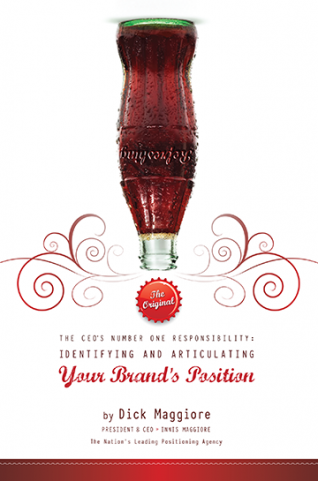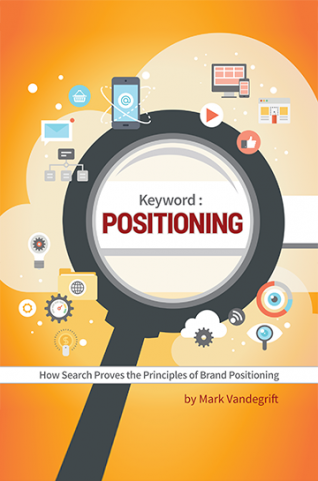Southwest Airlines was founded with a clear mission — to provide low-cost, convenient airfare for patrons. And for nearly 50 years, the airline stayed true to the brand differentiation strategy established by founders Herb Kelleher and Rollin King. Customer satisfaction catapulted the airline from its typical Dallas, Houston, and San Antonio service routes to the famed national carrier we know today.
However, this description of a happy, thriving, and well-positioned brand may feel like a distant mirage to some of its most loyal fliers. Starting in May, Southwest Airlines passengers will no longer be able to check up to two bags free. The once-differentiating perk will now be reserved for its Rapid Rewards A-list preferred members and those paying Business Select fares.
This policy change is another in the growing list of ways the airline continues to dismantle its famed brand differentiation strategy in the name of increased revenue. Let’s look at the good, bad, and ugly that led to Southwest Airlines’ ongoing descent from the friendly skies.
Remembering the early days of differentiation
We once heralded Southwest Airlines as one the most brilliant executors of brand differentiation strategy. The airline exhausted every possible mechanism for meeting its value position (while maintaining its renowned customer service).
If you’ve ever flown Southwest, you can already list several ways the brand restrains spending. The most widely recognized is the seating and boarding process. Unlike the competition, Southwest did away with assigned seating, giving patrons the ability to sit wherever — aisle, window, or middle — without premium pricing. The passenger airline also doesn’t provide in-flight meals, even on longer flights. Instead, it sticks to quick snacks and a classic lineup of refreshments as part of its brand differentiation strategy.
But Southwest’s dedication to affordable fare went beyond its frequent fliers’ line of vision. It was embedded into every aspect of its business model.
For instance, the airline only utilizes Boeing 737s. By sticking to one model, the airline maintains a hefty stockpile of parts and a team of technicians who are specialized in servicing that particular aircraft. No learning curves, and no lost time for maintenance.
Southwest also leveraged its presence at smaller and secondary airports. Coupled by employees who were expected to perform multiple functions (per negotiations with the company’s union), the airline achieved an average 30-minute turnaround time that reduced labor and operation costs while increasing the availability of aircraft for other trips. By comparison, other national carriers average 45-minute turnarounds.
And for most of its history, Southwest Airlines only sold tickets through its company website. Selling direct to the consumer meant the airline no longer owed commissions to third parties or travel agents.
Just as these tactics played into the brand differentiation strategy, Southwest continued to pack on the savings. For example, policies like two free checked bags or no-fee trip changes differentiated the airline from the competition. Through the Rapid Rewards Program, the brand also gave fliers the opportunity to earn points based on dollars spent, rather than miles — and, to top it off, these points never expired.
All these tactics and procedures played an integral role in Southwest’s brand differentiation strategy, which allowed passengers to experience customer-friendly, affordable air travel to their favorite destinations.
Why is Southwest sacrificing its Sacred Cows?
So, after 48 straight years of profitability, why did this shining example of brand differentiation strategy decide to abandon ship?
It started with the COVID-19 pandemic. Like others in the industry, the airline was immediately hit with a drop in demand. With worry and stay-at-home orders abounding, the airline was forced to break its record profitability as it succumbed to $3.1 billion in net losses.
Still, things were looking up for Southwest and its brand differentiation strategy, that is, until December 2022. Amid the busiest travel season, the brand experienced a massive software meltdown from a severe winter storm. More than 16,700 flights were cancelled due to the outdated software, which disrupted crew schedules, flight adjustments, and other communications.
The fiasco cost Southwest $800 million in losses, refunds, and reimbursements as well as a $140 million fine from the U.S. Department of Transportation. These expenses were exacerbated by another $1 billion investment required to upgrade the software following the incident.
Southwest Airlines was also impacted by supply chain delays and quality concerns with new 737 MAX aircraft deliveries from Boeing. Coupled by rising fuel and labor costs due to inflation, the airline ceased operation at four airports, laid off 2,000 employees, and reduced routes.
As these issues mounted, Elliot Investment Management became a key stakeholder in the company and immediately began packing on the pressure to turn the focus on revenue. The first items put on the chopping block? Open seating, new pricing tiers, and now, fees for checked bags. With the things Southwest once used to position itself gone, it began to look more like its compatriots in the Big Four.
Is this the final approach for Southwest’s brand differentiation strategy?
Despite championing differentiation, Southwest was quick to toss its once-masterful brand differentiation strategy down the drain. The move has left everyone from the brands’ closest followers to distant observers asking, “What went wrong with the pioneer in affordable airfare?”
If you assume the positionist’s lens for this situation, the quick reply may be that Southwest Airlines should have held the line, even during rock-bottom moments like the software meltdown. However, the story of this airline leader and its brand differentiation strategy offers another important positioning lesson: the necessity of innovation.
It’s one thing for a brand to take hold of its position and another to keep it. By neglecting essential software upgrades, Southwest placed its position in a dangerous spot. When the software meltdown took place, it unleashed a chain reaction that led the brand to default on its brand promises.
And as Southwest’s brand differentiation strategy crumbled from the pressures, competitors across the industry started looking to take advantage of the open market share. Airlines in the ultra-low-cost carrier (ULCC) category like Allegiant, Breeze, and Spirit could take advantage of Southwest’s waning affordability.
Frontier, in particular, was the first to seize the opportunity. Following Southwest’s announcement that it would be ending “bags fly free,” Frontier countered with a free checked bag promotion starting May 28 — the exact date Southwest is set to end its famous policy.
In a press release distributed on March 18, Frontier shared its not-so-subtle intentions: “Some airlines have changed. They’ve raised fees, taken away perks, and made travel feel like a one-sided relationship. If your airline is treating you like an afterthought, maybe it’s time to file for divorce. Frontier is here for the rebound - offering a fresh start with an unbeatable deal.”
This airline knows a wounded heart when it sees one. Using the vivid metaphor of divorce, Frontier is calling even the most loyal Southwest fans to see the writing on the wall. And if this reality check didn’t move the needle, then Barry Biffle, CEO of Frontier Airlines, was ready to up the ante.
“We’ve always had heart,” said Biffle, CEO, Frontier Airlines. “Some airlines are walking away from what travelers love, but we’re running toward it. Think of this as the ultimate ‘divorce your old airline’ deal. If travelers show us the love, we’ll make these perks permanent.”
Even major carriers like United, American Airlines, and Delta are starting to encroach in Southwest’s old turf as they begin implementing new cost-efficiency mechanisms like lower-cost air fares, checked bag discounts, and more reliable, farther-reaching services.
Despite concern for the brand differentiation strategy, Southwest has publicly espoused its (maybe somewhat delusional) confidence in the end of free checked bags and other policy changes.
At a JPMorgan industry conference, Southwest Airlines CEO Bob Jordan affirmed the decision, claiming “in contrast to our previous analysis, actual customer book behavior … did not show that we are getting the same benefit from our bundled offering with free bags, which has led us to update the assumptions.”
But even as it abandons previous hallmarks, Southwest hasn’t abandoned the idea of positioning entirely. Instead, the airline affirms its premiere customer service and hospitality are its true position (though the wailing and gnashing of teeth online may beg to differ). Given the company’s support and false perception of its position, it seems this may be the final approach for one of the strongest brand differentiation strategies.
Rather than peer into its historical successes over the last five decades or learn from mistakes in 2022, Southwest Airlines has decided to listen to those with no regard for the brand. But will this latest brand misstep truly be its last? Only time will tell.
Looking to chart a different course than our friends at Southwest Airlines? Then it’s time to build a brand perception that will help you soar through every situation, from clear skies to oncoming turbulence. Take advice from a group who practices positioning best. Contact America’s #1 positioning ad agency to (re)assess your brand differentiation strategy today.



